What is B2B Marketing? How to Build a Funnel Today!
B2B marketing can be a much bigger challenge compared to companies that focus directly on the end consumer. 🥲
You need to generate much more value for your brand and deal with a slightly longer and more meticulous sales cycle. Decision-makers will be more stringent when choosing a product or service that affects their company and, consequently, their audience.
But… difficult doesn’t mean impossible, right? 😉
That’s why I’ve put together a complete guide on B2B Marketing, covering everything from concepts to the key metrics you need to analyze in your daily routine.
Shall we get started?
What is B2B marketing?
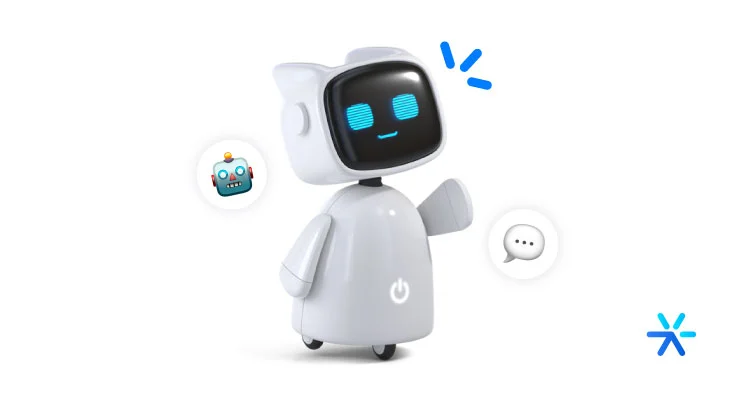
To begin with, let’s understand what B2B means.
This acronym stands for Business to Business – business to business. In other words, these are companies whose business model is to sell to other companies.
This means that the client of this type of business is not Rafael, who went to the clothing store around the corner to buy a jacket for the new cold wave, but rather Rafael’s real estate company, which needs software to generate qualified leads, for example.
🙋Ok, if B2B means from business to business, then B2B Marketing is a set of actions aimed at boosting this business-to-business relationship and closing a sale, right?
Yes, but I won’t stop here.
We need to understand that unlike B2C marketing (Business to Consumer), which focuses on promoting and selling products to end consumers, B2B not only aims to close sales but also seeks to establish long-term, mutually beneficial relationships with the customer.
Still on the challenges, another thing to keep in mind is that the number of B2C consumers will always be greater than B2B.
There are more people than companies in the world. The number of consumers who want a chocolate bar right now is much greater than those looking for CRM sales software to align their inbound leads, for example.
What are the differences between B2B and B2C marketing?
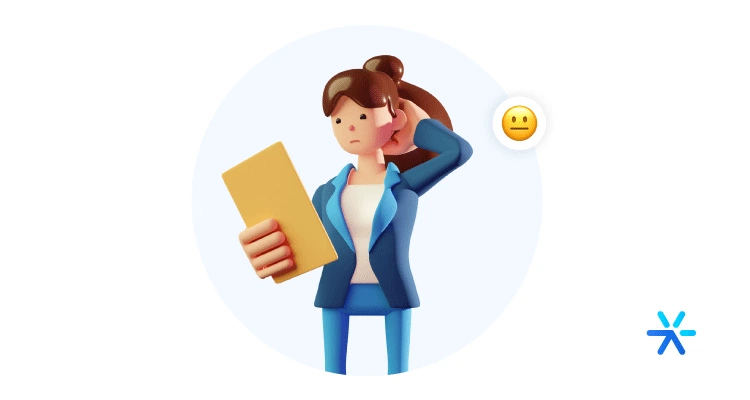
Great, you’re already familiar with the concept of B2B Marketing, but you must have noticed that I mentioned B2C a couple of times in the article, right?
Well, let’s now delve deeper into this new concept and the main differences between the two.
While B2B means from business to business, B2C refers to the sale from business to the end consumer. In this type of strategy, marketing actions are much more targeted to each individual and have a shorter sales cycle.
Now that you know the basic concept, check out five differences between B2B and B2C Marketing that I’ve listed below:
Target audience
The difference in audience is already evident. After all, while a B2C company speaks to individuals, a B2B company speaks to other businesses, and this in itself is a significant contrast.
On more specific matters, the B2B audience is often impacted during working hours, as they are looking for solutions during this time, so they expect B2B campaigns to work alongside them.
Moreover, most B2B campaigns focus on helping the target audience solve a work-related issue, providing solutions to a problem.
B2C campaigns, on the other hand, are more wide-ranging. They don’t just focus on the customer’s pain point and often aim for actions that have nothing to do with what the product offers in practice—the focus is on feeling and storytelling.
Longer sales cycles
I always say the sales cycle is longer because the time spent from the lead’s first contact with the brand to the purchase decision is indeed longer than in a B2C flow.
It’s common for this process to last from a few weeks to even several months, as in B2B decision-making, there are several evaluations and individuals through whom the product or service must pass before it is decided whether or not there will be a purchase.
More defined customer journey
End consumers, in B2C, tend to have a less linear and defined buying journey. In many cases, they are already looking for a product or service, compare a few options, and quickly decide whether to go with X or Y.
Everything happens very quickly, and in many cases, without “respecting” the order of the journey and the funnel. Many arrive at the final stage and only need bottom-of-the-funnel content and actions, for example.
On the other hand, B2B customers have more complex journeys, with several stages and decisions to be made.
Therefore, the buying journey in B2B marketing is usually more organized and relies on a large number of actions across its three stages.
Fewer product varieties
I’ll give you two scenarios: you go to the supermarket because you’re really craving grape juice, walk down the beverage aisle, and how many brands and types of juice are you “bombarded” with? You might even choose to buy from two different companies just to try them out, right?
Now, the other scenario: you own a marketing agency and want to automate your email marketing strategy. How many companies do you know that offer this tool?
The offering might be larger than just two, but you’re not going to sign up with more than one just to try them out, are you?
There’s another major difference between B2B and B2C: the variety of products, brands, and types in B2C is much greater.
💡 B2B companies need to constantly invest in demand generation. Learn more about this in this article.
More informed consumers
There’s no denying it—the level of knowledge B2B prospects have is enormous.
Remember: the B2B consumer will want to be absolutely certain before closing a deal that will directly impact their customers.
That’s why, oftentimes, your point of contact might be someone from the technical department, and that person might know more than the salesperson.
B2B sales require a marketing and sales team that is truly specialized not only in the product or service being sold but also in what it will be used for.
How to do B2B marketing?
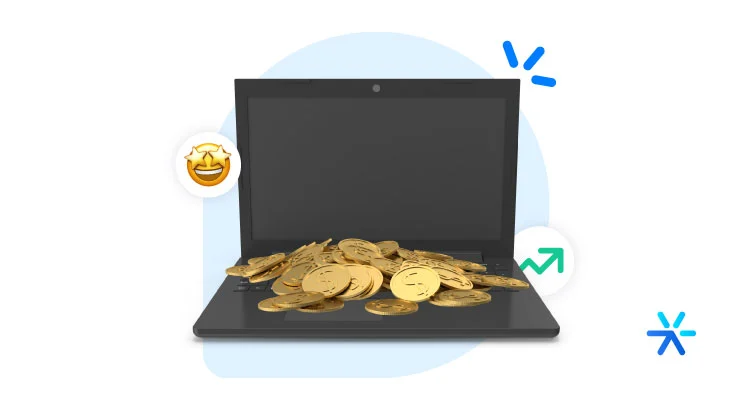
Now that the concept and differences between B2B and B2C have been clarified, let’s understand how you can implement B2B Marketing.
Before breaking down the actions by the sales funnel—which will make your life easier when it comes to getting to work—here are some tips on how to apply these strategies:
- Identify your target audience: Before creating any B2B marketing campaign, it’s essential to identify who your target audience is. Think about the types of companies that could benefit from your products or services, then create a profile for them.
- Create relevant content: Content is the key to B2B marketing—it’s no coincidence that we’ll segment each type into different stages of the funnel. Create relevant and useful content for other companies.
- Participate in industry events: Event marketing is a great way to connect with other companies and build relationships. So, consider participating in fairs and conferences relevant to your industry.
- Invest in social media: Social media, especially LinkedIn, is a great way to connect with other companies.
- Leverage email marketing: Email marketing is essential for communicating with other companies. Build a list of emails from relevant companies in your industry through lead generation and send personalized campaigns for each stage of the buyer’s journey.
- Use marketing automation: Marketing automation is an effective way to scale your B2B marketing campaigns.
- Invest in SEO: SEO is crucial to ensuring that your company is found by the right clients.
Phew, that was a lot of tips… but now let’s get to what matters even more: how to do B2B Marketing through the marketing and sales funnel.
Top of the funnel
At the top of the funnel in B2B marketing, the focus is on attracting the attention of companies that might be interested in your products or services.
At this point, you’ll be speaking to companies that could be potential clients, but who know little about your brand.
Since they are B2B consumers, they won’t spare any effort in researching, so it’s crucial that your marketing campaigns show up in their search, but without trying to sell directly—this moment is about informing, educating, and raising consumer awareness.
Some strategies you can apply are:
- Content marketing: Create educational and informative content, such as blogs, infographics, and videos, to attract companies interested in your sector.
- SEO: Optimize your website for relevant keywords to attract organic traffic.
- Social media: Use social media to promote your content and attract followers who are interested.
Middle of the Funnel
Yay, the user has moved past the ToFu, shown more interest in the solution, and is now in the middle of the funnel gathering more information!
One challenge has been overcome, but now you face another, as this visitor has three options:
- Do nothing;
- Research enough to solve the problem independently; or
- Hire a third party to solve the problem.
Of course, your B2B company doesn’t want either of the first two options, so we are left with guiding the visitor to the third one – but without shoving your brand down their throat.
The focus at this stage is to convert visitors into qualified leads. In other words, you will need more targeted campaigns aimed at getting companies to engage with your business by providing the necessary information to make a well-informed decision.
The suggested actions are:
- Email marketing: invest in personalized email campaigns to nurture leads and keep companies engaged. Oh, and make use of lead magnets for these same users;
- Webinars: free webinars are great for informing and educating leads, as well as helping them make informed decisions;
- Content marketing: lastly, continue creating relevant articles to help companies understand how your products or services can help them achieve their goals.
Bottom of the Funnel
Finally, your lead has reached the bottom of the funnel!
Now comes the bigger challenge of addressing various questions, overcoming objections, and convincing them that your brand is truly the best option.
The marketing campaigns at this stage need to be highly personalized and focused on directly selling to interested companies.
Thus, it’s a good idea to invest in the following strategies:
- Personalized email campaigns: send highly customized email campaigns to each lead at the bottom of the funnel, with more technical and sales-oriented content;
- Free product or service demo: offer a free trial of the product to help the company understand how it would work in their specific situation;
- Client case studies: take advantage of testimonials and success stories from past and current clients.
If everything went well up to this point, congratulations, you closed your B2B sale!
What are the most valuable metrics for B2B marketing?

After all these steps through the funnel, how do you know if your actions are working?
That’s where metrics come in! Here are the six most valuable metrics for B2B marketing:
🔎Read also: ROI in Marketing: What It Is and How to Maximize Yours
Website Visitors
The number of visitors to your website is a key metric for understanding how successful your B2B marketing is at reaching new leads.
It’s important to monitor the number of unique visitors, as well as the average time spent on the site, to evaluate how engaging your content is.
To measure these numbers, you can rely on several tools, but most use data from Google Analytics 4.
Lead Conversion
Want to know if your strategies are generating leads? The lead conversion metric is key.
This is how you’ll understand how your B2B lead generation is being affected by different tactics.
To calculate it, just plug the values into the formula below:
Email Open Rate
As the name suggests, the email open rate corresponds to the number of times an email has been opened by users within a certain period – determined by you during the analysis.
This metric is essential for analyzing whether your email marketing campaigns are generating engagement.
To track this number, you can rely on email marketing tools. In fact, with these platforms, you can also monitor the performance of email subject lines and test different ones to increase the open rate.
Ad Conversion Rate
The ad conversion rate is an important metric for understanding the effectiveness of your paid media campaigns.
This conversion rate measures how well your ads are driving qualified traffic to your website, as well as how well your site converts visitors into leads.
To measure this metric, you can use the ad analysis tools within the ad platforms themselves, like Google Ads and Facebook Ads.
They allow you to monitor how many people clicked on your ads and how many of them converted into leads or customers.
Number of MQLs
MQLs – Marketing Qualified Leads – are those who have shown interest in your products or services and are closer to becoming customers. Knowing the number of MQLs is important for understanding the effectiveness of your actions in generating leads that are ready to be approached by your sales team.
To track the number of MQLs, you can use a marketing automation tool to categorize leads based on their interest and qualification criteria, allowing you to monitor how many leads fall into the MQL category.
This process has a name: Lead Scoring. Learn more in our article on the subject.
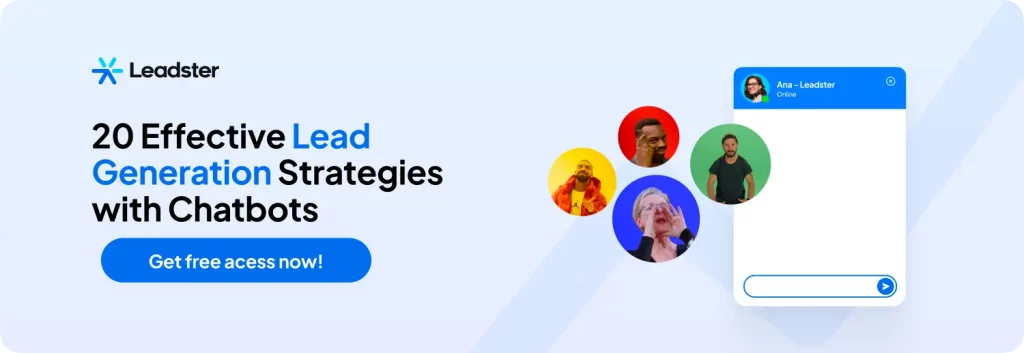
Sales Conversion
Lastly, the sales conversion metric is the final and most important figure for understanding the effectiveness of your B2B marketing.
This is the data that will show you how many sales are being generated through all your marketing efforts.
The calculation is the same as for lead conversion, but here the factors to be considered are different. See below:
What is the future of the B2B consumer?

Well, what we’ve discussed so far in the article is the standard when talking about B2B marketing.
All you need to get started in this field are these first steps: defining your target audience, creating the funnel, producing content, working with ads, and understanding the customer journey.
But as I mentioned, these are the basic points. This is where every B2B marketing strategy begins because these are the fundamental strategies of digital marketing itself.
However, I think it’s interesting to take a moment to discuss the future of B2B digital marketing. The future, in fact, that is beginning right now, as you read this article.
We have created a highly detailed e-book gathering global research aimed at better understanding B2B consumer behavior. I’ve brought its key points for us to discuss here and now.
First, let’s talk about what these changes are. And then, together, we will understand what actions your brand needs to take to successfully enter this new landscape.
Shall we?
The decision-making process has never been more in the hands of your visitor
What we’ve discussed so far shows a fairly linear reality. The very idea of the Marketing Funnel applied to B2B already brings a lot of this linear concept: customers follow a path predetermined by marketing.
But the reality is quite different, especially in B2B marketing. The linearity of any Journey or Funnel goes out the window as we understand that the decision-making process is entirely in the hands of your visitor.
This paradigm shift has several reasons, but the main one is the focus on the PLG approach – Product Led Growth – and the end of the golden age of B2B salespeople.
But let’s be clear: I’m not saying that salespeople are becoming obsolete!
The truth is that the sales process is becoming more autonomous and independent with new business practices, especially in the SaaS segment.
For many years, even SaaS companies followed a simple sales process: the lead would convert, be nurtured, and the salesperson would contact them to present the tool.
This would lead to a trial and eventually a sale. Even HubSpot, the creator of Inbound Marketing, applied B2B marketing this way, with a dedicated call center.
Today, there are multiple touchpoints. Here are some, for example, taken directly from our e-book “The Future of the B2B Consumer”:
- Recommendations from communities;
- Reviews about the company being hired;
- YouTube videos about the product;
- Demo directly on the website;
Among other touchpoints. In none of these is there a salesperson present. So even those working with an in-house sales team will still be dealing with a customer who is fully informed about your tool and those of your competitors.
The consumer is one click away from your competitors
Speaking of competition, it has never been fiercer in B2B marketing. And it’s likely to become even more so.
The decision-making process is increasingly in the hands of your visitor precisely because the competition is always just one click away.
This is the reality of the moment we live in. Part of the solution to standing out in a market where the visitor has all the power is to produce more material and invest even more in organic and paid strategies to generate leads.
The point is that this boosts the entire market. If one B2B company does it, all the others will start doing it too.
The culmination of this is a scenario where any company starting a B2B marketing strategy will face strong and active competition.
Including competitors who have been working on this front for years, even more than a decade.
A recent McKinsey survey showed that before your visitor makes the first conversion — that is, becoming a lead — they conduct an average of 12 searches, both on your site and your competitors’ sites.
So, your job is first to adapt to market demands and then to present your differentiators. It’s a long and arduous journey, but it’s the only road that leads to the future.
The journey to decision-making is more complex and distributed
When I talk about how the decision-making process and the buying journey have become complex, I’m talking about real complexity, sometimes even quite difficult to grasp.
Still in doubt? Then take a look at this representation of a Marketing Funnel that goes beyond linearity and truly seeks to represent the B2B buying process:
See the original image here
The linear model of the Marketing and Sales Funnel has always been very didactic but not very representative of the B2B Journey and B2B marketing in general.
It should be read as a scheme, a framework to explain the interactions between brand, target, and the people within the company with the power to close a deal with you.
The flywheel model emerged a few years ago and was almost ignored for this very reason. It’s not linear but circular, and it’s also made up of 5 well-marked stages and assumes that everyone will follow it to the letter when making a B2B decision.
The truth is quite different. A lot happens within the company before a product is chosen. Your brand needs to be present in as many of these stages as possible.
We’ve never had so much data – and so little information about our audience
In the entire history of humanity, there has never been a situation where a salesperson had so much data about their buyers. This is the first time it has happened.
It’s what we were discussing in the previous item: we know a lot about our ideal clients, but we know little about what they do, how they think, and how they interact with our brand beyond what our Analytics tell us.
It’s what TheFCompany coined as The Dark Funnel.
Just think about this little Journey:
- Your prospect saw a post on LinkedIn that mentions your brand or product;
- A colleague of his mentions this post;
- The prospect watches a webinar from another brand that also mentions the product;
- The prospect starts a discussion on a related topic on Facebook;
- He sees 5 ads on Instagram and doesn’t click on any;
- The CEO of the prospect’s company shares the original post on Slack;
- The prospect hears a mention of the brand or product in a podcast;
- The prospect searches for your product by name on Google, visits your site, and converts into a lead.
According to Google Analytics, this lead came from Organic Search, and that’s it because he didn’t click on anything other than the organic link on Google after a common search.
Everything else was completely ignored because it’s impossible to measure. And surprisingly, just having GA tell you that this lead came from organic search is already an incredible data revolution when we think of offline marketing, for example.
So, data does tell stories, but not the whole story. This is one of the main challenges of B2B digital marketing today.
The emotional aspect has never been so relevant in B2B decision-making
We have a super interesting diagram in our e-book about the Future of the B2B Consumer. It’s on page 31. If you haven’t downloaded it yet, I recommend doing so now to follow this item.
Consulting firm Bain determined that there are over 40 factors that influence a decision-maker in a company to choose a product.
In the e-book, we created a Maslow pyramid with these factors, leaving the most basic ones (with the least potential for influence) at the bottom.
All the logical factors, like price, compliance, scalability, and product quality, are at the base of the pyramid — meaning they have less influence on the process.
At the same time, emotional factors are at the top: social responsibility, the vision of the company being hired, hope for mutual growth, network expansion, and even fun come first.
The point is that managers will use logical arguments to convince stakeholders to go with the suggested tool.
But the managers themselves are much more susceptible to emotional signals that the brand offers.
Your visitor has never been so anxious
According to a study by Xoomi, a marketing agency specializing in Inbound Marketing, responding to your visitor within 1 minute increases the Conversion Rate by up to 391%.
That’s right: your rate quadruples just by responding quickly.
Anxiety is a common trait among Brazilians. And this is highly reflected in how we, as customers, expect to communicate with brands when making a purchase.
It’s essential to reduce the waiting time in interactions whenever possible. The faster you are, the higher your chances of converting.
Your lead receives hundreds of ads every day
And I’m not even exaggerating. We have an article on the blog where we analyzed Facebook’s Ad Library, and in just one example, we found 100 different ads for a single image 😮
And that was just one image. The same company had many other configured ads in several hundred other ads.
It’s hard to say exactly the average number of ads a person sees per day, but we can’t ignore the fact that this number is simply enormous.
This is because ads are the quickest way to generate leads and sales in today’s digital marketing landscape. Without them, many companies feel powerless, unable to do anything.
So, keep this in mind: you’re creating ads for an audience that, even when converting, is completely overwhelmed by them.
It’s becoming increasingly difficult to capture and retain the consumer’s attention
Look at what we’ve already understood from the previous items: Brazilian consumers are becoming more anxious and are constantly bombarded with ads.
This is a perfect recipe for difficulty in retaining advertising information in general.
I’m not even addressing the broader issue of attention in the 21st century. It’s just that if you put an anxious buyer in contact with hundreds of ads every day, it’s only natural that they will learn to ignore these communications.
This is the lack of attention we are dealing with today in B2B marketing. And with marketing efforts becoming increasingly similar and stagnant, this attention is becoming more and more diffuse.
What to do to adapt to this future and present?

Well, we’ve talked about the main challenges that B2B marketing is beginning to face today and will continue to face in the coming years.
But now we also need to discuss how to overcome these challenges. What can be done to ensure success in your strategies despite all these obstacles?
That’s what we’ll talk about in this topic. And don’t worry: the solutions are in order according to the problems discussed earlier.
Shall we?
Positioning, market education, and demand generation
The main way to deal with an increasingly well-informed consumer with more decision-making power is to dance the same dance.
In other words: in a world where Content Marketing and Demand Generation dominate the B2B sales process, you need to do the same.
This happens in several different ways. Here are some solutions taken directly from the e-book “The Future of the B2B Consumer”:
- Blogs to generate leads;
- Investment in more in-depth materials to generate backlinks and authority;
- Investment in Paid Media;
- Branding;
- Guerrilla Marketing.
Among others. Check out the chart below, also taken from the e-book, showing the main touchpoints that generate sales in B2B marketing:
Strategic lead qualification
The only way to “deal” with competition just a click away is by simplifying both your sales process and your marketing as a whole.
If your competitors’ websites are open in the browsers of your visitors and leads, you need to know these sites and do better than them.
This is solved with good benchmarking. Keep in mind that your site needs to answer your visitor’s two main questions almost immediately:
- Does this solution meet my needs?
- Is this the most qualified company to provide this solution?
Even your most qualified leads, those who are closest to your ICP and Target Audience, won’t always have time to read your more detailed content or fill out long forms.
Your marketing needs to be diverse: simple for those who need simplicity. Complex for those who need technical details.
Understanding People, Platforms, and Information Influencing Sales
The only way to combat the complexity of the B2B Journey is to map out the touchpoints between your brand and your prospects — the potential clients.
And this is done in numerous ways, many of which are specific to your segment and even to your individual company.
There are many points of interaction that are completely invisible to you. For example: a colleague of the person responsible for purchasing in a company mentions your brand during a coffee break.
How do you control this without hiring fake colleagues? 😅 By investing in content, branding, and maximizing your online presence as much as possible.
This includes mapping influencers, for example, holding constant webinars on topics that interest businesses, and positioning yourself not just as “another brand producing content,” but as the brand that produces the best content in your segment.
A great example of this is Resultados Digitais. Their investment in content in various forms has solidified the company’s reputation as the best. All their initiatives, including events, webinars, courses, etc., further cement this position.
Technical Race to Gather More Data
To deal with the Dark Funnel mentioned in the previous section, you need to start a technical race right now.
The first step is to set up Google Analytics 4. It has its flaws, but it is currently the only analytics system available capable of attributing credits to visits on your site beyond the last click.
This is, of course, because third-party cookies no longer exist for ideal tracking.
GA4’s events were designed to address this blackout. And its attribution models help you create increasingly robust reports for your B2B digital marketing.
This is known as: first-party data. Since you can’t know what your visitor is doing outside your site, you need to be sure of what they are doing inside it.
Emotional Factors in B2B Digital Marketing
With decision-makers increasingly motivated by emotions and less by logic when it comes to hiring, your company also needs to focus on these emotions.
In the e-book about the Future of the B2B Consumer, we cover eight fundamental points for better handling emotional factors in B2B marketing. Here’s a preview:
– Comparison: how are your competitors handling emotional points?
– Clients: what do your clients think of your brand today?
– Value: what can add more emotional value?
– Personalization: emotional aspects start with personalization in marketing;
– Branding: don’t skimp here. Good design and branding communicate emotion;
– Innovation: try to stand out in areas that matter to your prospects;
– Peer 2 Peer: people talk to people, not brands. Appoint ambassadors within your own company and highlight them in your posts!
Understanding the Journey, Not Forcing the Prospect to Fit Into Yours
To address Brazilian anxiety, the first step is to expedite your service.
In our e-book, we included a table showing the expected response times by channel. Check it out:
But that’s just the first step. You need to understand the Customer Journey in depth, mapping out interactions between your prospect and you, rather than trying to fit them into a rigid Funnel.
This is a common mistake in B2B marketing: creating a Funnel and forgetting everything else. The Funnel is law and that’s it!
It doesn’t work that way. Funnels change according to people’s consumption preferences, market changes, and even changes in a company’s board, in the case of an ABM (Account Based Marketing) strategy.
In our e-book, we also included a very interesting abstraction on how B2B websites and marketing strategies work today. Here’s a summary in the topics:
– A designer wants to buy a laptop. She already knows which one and just wants to go to the store and take the product home;
– She arrives at the store and asks for a salesperson. The salesperson then, instead of listening to her, forces her to watch a 5-minute promotional video;
– The designer watches reluctantly, and when the video ends, the salesperson refuses to accept payment: she needs to take the laptop home and test it for two weeks before buying;
– Two weeks later, instead of paying for the laptop to the salesperson and taking it home, he sends an email about how she would love this other PC, 2 times more expensive;
– When she goes to the store to confront the salesperson and take her laptop home once and for all, surprise: the salesperson is unavailable.
It’s a bizarre experience, isn’t it? But that’s what happens when you insist on putting a customer into a Funnel, no matter what they think about it.
Strategic Ads Instead of Many Ads
You can’t stop making ads. This is unfeasible in today’s B2B marketing landscape. They are a fundamental tool for generating more leads and sales.
The thing is, you don’t need to make dozens and dozens of ads. Prefer strategic ads targeted at the right audience.
The first step is to analyze which platforms are ideal for your brand and your ads. See this scheme below, with data from our 2023 Lead Generation Panorama:
‼️ Important: this data was updated in the 2024 Lead Generation Panorama. Access it by clicking the link.
Each channel presents its opportunities. You need to consider intentionality, for example, in Google Ads Search Network ads.
For Display ads, especially Meta Ads and LinkedIn Ads, ideal audience segmentation ensures that you don’t need to make many ads, but make the right ads.
If you want to learn more about successful ads in B2B digital marketing and beyond, we have material just for that. Access it by clicking the banner below:
Personalization to Increase Conversion in B2B Digital Marketing
The lack of attention to conventional ads is solved by removing one element from the equation: the conventional.
You need to understand your target audience perfectly to know what they expect from communication, and then offer something surprising and innovative.
One way to do this is through a chatbot. Nowadays, the dominant way to generate leads on a site is through forms.
If you include a conversational and personalized approach based on what your visitor is reading, conversions increase.
Leadster works on this premise, which has been proven by all our clients’ success stories.
The increase in lead generation is instantaneous, starting on the same day of implementation, in fact.
If you want to test it today, start a trial with us. Activation on the site is done by yourself in five minutes, and doesn’t require a credit card.
So, what did you think of this super comprehensive B2B digital marketing guide?
I hope it helped you understand not only the basic strategy but also the adjustments you’ll need to make throughout its application.
And, in any case, here’s another invitation to check out our material on the Future of the B2B Consumer.
In it, we delve into each of these points and present dozens of charts to illustrate the points and solutions for each.
And the best part, it’s free! Download it today by clicking the link below.
Thank you for reading. Good luck, good sales, and see you in the next article 😉
So, is your B2B Marketing strategy up-to-date after this super complete content I put together?
Remember that this type of segment is one of the most difficult and challenging, but nothing that good planning and useful tools can’t solve.
Speaking of which… I have a great tool to recommend if you want to generate 3 times more qualified B2B leads. Remember, with more qualified leads, your chances of closing more sales increase.🤭
I’m talking about Leadster’s Conversational Marketing platform! Through the marketing and sales chatbot, you can increase the number of quotes and meetings, optimize your sales team’s routine, and distribute leads intelligently. 🚀
All this because you will be talking to your audience in a personalized, instantaneous manner with qualification based on your criteria.
If you want to learn more about this solution, I’m leaving a super complete and objective article on how this tool can benefit your B2B company: Generate 3x More Qualified B2B Leads!
By the way, you can start your free trial right now, it’s 14 days—don’t miss out!
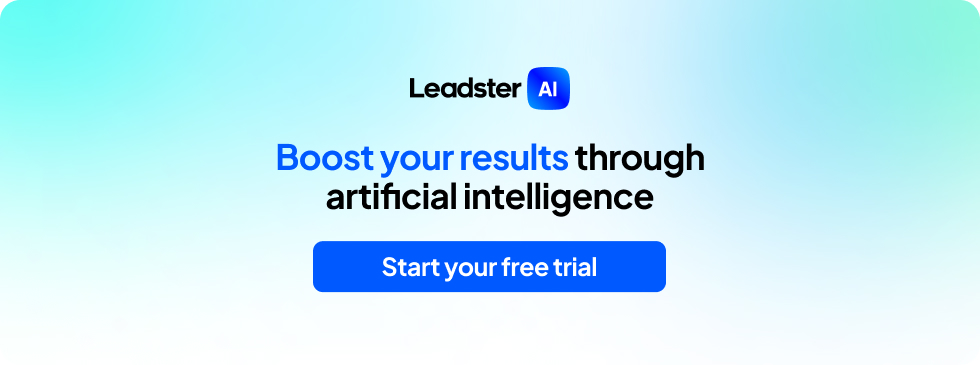

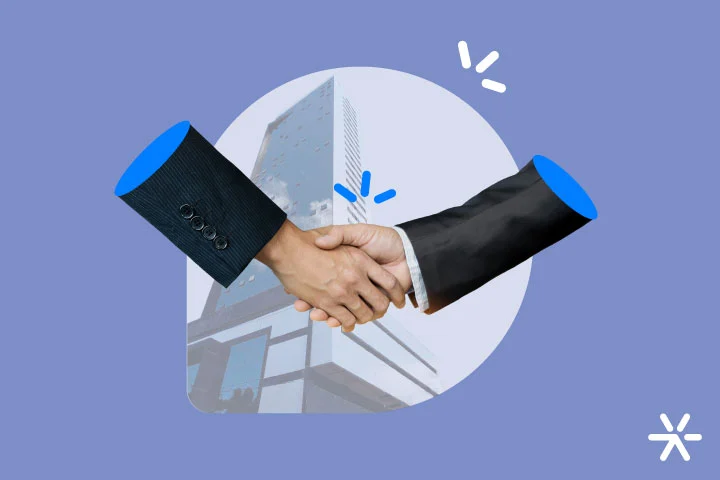
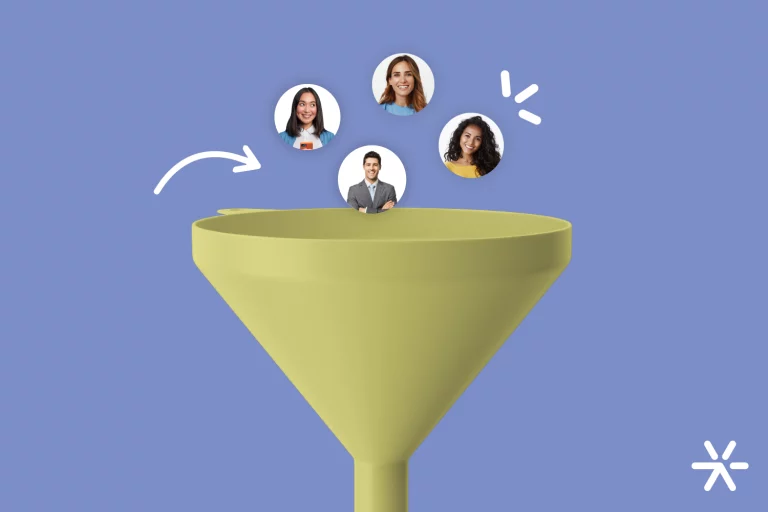

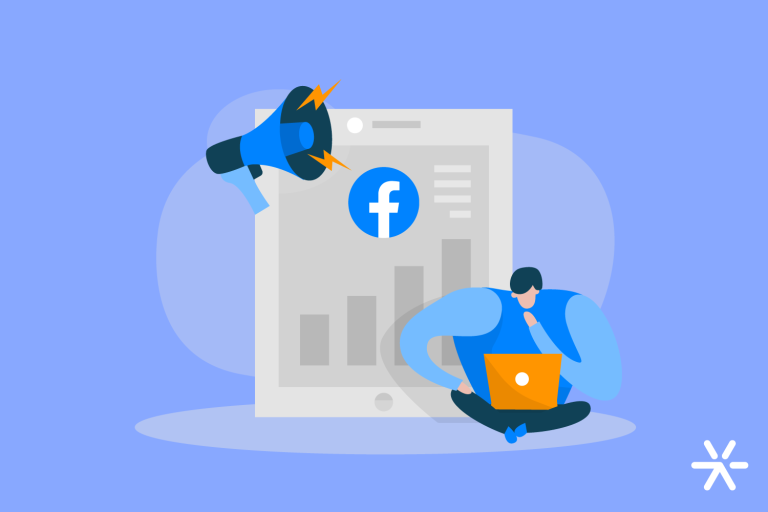
![Everything and More about Digital Marketing Funnel [Complete Guide]](https://getleadster.com/blog/wp-content/uploads/2025/03/Seu-Funil-de-Marketing-esta-Congestionado-Descubra-os-Problemas-mais-Comuns.png)

